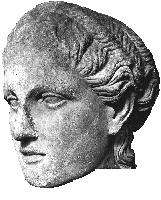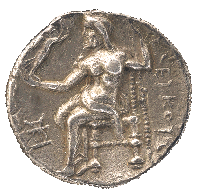The Ancient Greek World Index
 From an early time the Greeks put the statues of their gods in
temples, often enclosed in walled sanctuaries. Most of the formal
ritual associated with Greek religion-purification, libation and
sacrifice, supplication, the swearing of oaths, and prayer-took place
around altars set up nearby the temples.
From an early time the Greeks put the statues of their gods in
temples, often enclosed in walled sanctuaries. Most of the formal
ritual associated with Greek religion-purification, libation and
sacrifice, supplication, the swearing of oaths, and prayer-took place
around altars set up nearby the temples.
Statues like the 40 foot high seated Zeus at Olympia and the standing figure of Athena in Athens, were regarded by the ancients as the wonders of their age. They were made from the most expensive materials - ivory for the flesh, gold and perhaps glass for their drapery. Most statues were displayed on a raised base at the rear of the temple's principal room or cella. They faced east, toward the god's altar set up in front of the temple.
Before about 600 BC the statues, whether made of
wood or stone, seem to have been relatively small and thus could be
carried out of the temple in procession. They were even bathed,
clothed and symbolically fed on special occasions. The stone, bronze
and chryselephantine (gold and ivory) productions of later times
tended to be larger and remained permanently fixed to their cella
settings.
 Silver Tetradrachm
Silver Tetradrachm